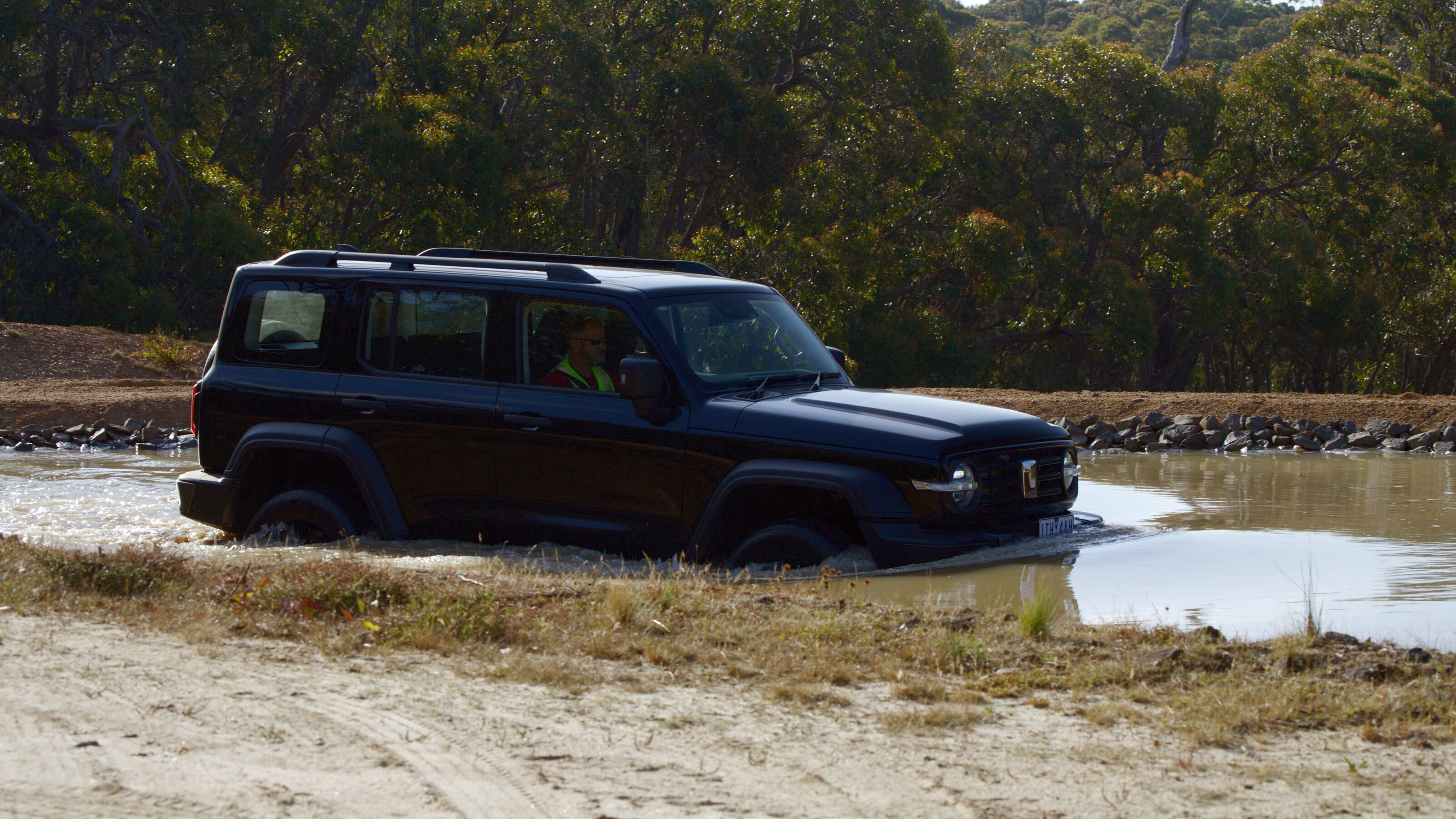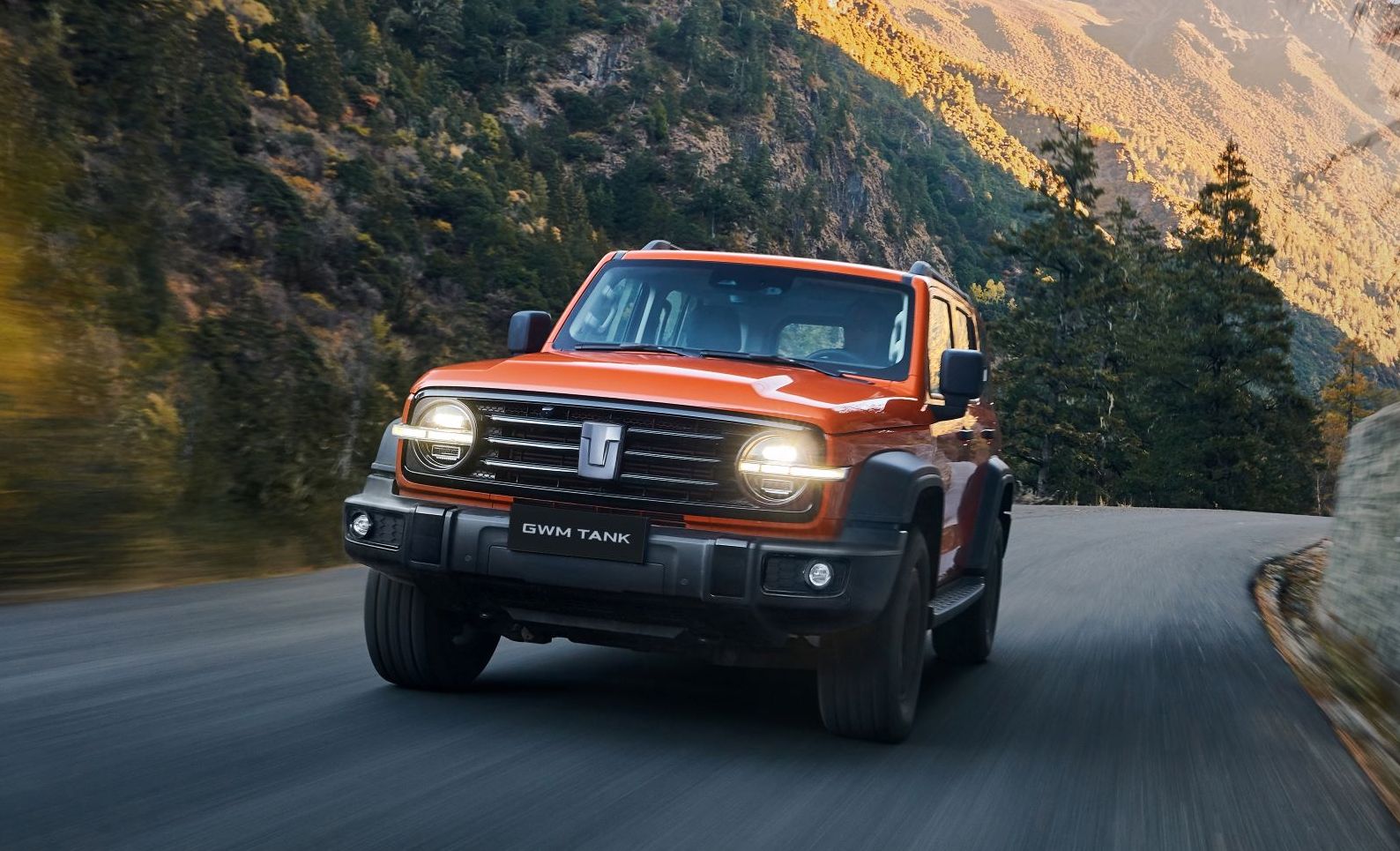July 20: GWM Tank 300 driven on-road and off
GWM’s Tank 300 is here, and we’ve had a proper run off-road. Get Tristan Tancredi’s thoughts here.
He mentions the Wrangler, like, SIX TIMES. Six!
▶ Story continues
Snapshot
- Disparate SUV and EV specialists to fall under u2018One GWMu2019
- Simplifies experience for Australians
- Push for u2018New Energy Vehiclesu2019 (NEVs)
- ICE still important in Oz
‘One GWM’ may sound like a heavy-handed government movement in a far off dystopian universe, but in truth it’s the Chinese carmaker’s latest plan to increase market share globally.
The most obvious manifestation is in the newly-launched Ora. The small EV is known as the Good Cat in China, or Funky Cat in the UK. The Cat name is gone for Australia; let a solitary tear slip out of your ducts if you need, but it’s a decision that will likely pay off.
To sell more cars, GWM needs to increase global appeal. Of the million-plus vehicles it built last year, GWM sold nearly 900,000 at home.

Exports accounted for around 170,000 sales (16 per cent), with 25,042 destined for Australian shores according to official VFACTs figures. That makes us GWM’s biggest export market, and second most profitable after Russia.
With such a volume of cars on sale in its China home market, it’s understandable that GWM has spin-off brands at home, where there’s enough population to appreciate each nuanced name.
This means more streamlined branding for all the vehicles, and a more consistent experience. Expect plenty more hybrid and electric vehicles in the future, with new models such as the Dargo and Lightning Cat under consideration, and even electrified variants of GWM’s Ute.

What does ‘One GWM’ really mean?
Not all of GWM’s China brands translate well to western audiences. Haval, Tank and Ora – which specialise in SUV, off-road and EVs respectively – are relatively harmless, but the Poer utes and Wey plug-in hybrids don’t port across quite as seamlessly.
Nor, for that matter, would Funky Cat resonate with most Australians. We’re a pretty switched-on bunch when it comes to names, and won’t back down from making fun of them either.
“We’ve been slowly evolving through that in the last two or three years to the point now where every piece of advertising we do is under that One GWM banner, and GWM is the only name we actually advertise with”, explained head of marketing and communications, Steve Maciver.

“We still talk about Haval, and we still talk about Ora, in terms of important model series, those are names that we have to continue to get out”, Maciver added.
The simplification also ought to aid GWM’s local recognition. Instead of having four or five different brands at a dealership, all will fall simply under the GWM banner.
For that, buyers will be treated to a consistent seven-year/unlimited kilometre warranty, a matching period of free road-side assistance and capped-price servicing.

‘One GWM’ is all about electrification
“That [one GWM] strategy is something that we’re beginning to hear about, not just in Australia, but it is a global change as well,” Maciver told motoring media.
“For those of you that have been close enough to the company, remember the company was trading under Haval motor Australia, but we’re now realigning everything under that one GWM banner.
“It’s not just a name change; this is about essentially changing our focus as a company.

“We are moving forward, it’s our introduction to ‘New Energy Vehicles’ (NEV). We said before, we are planning to release a bucketload of NEV models; 50 NEV models will be launched by 2025; 80 per cent of all new GWM vehicles will be NEV between now and 2025″, said Maciver.
“That’s a massive change to happen in the next two or three years”
This started with the introduction of Haval H6 and Jolion hybrid variants, and continues with the latest addition of Tank 300 hybrid.

What about pure EVs in Australia?
GWM has identified separate global markets as most suited to certain powertrains. Australia fits into what GWM terms a “market demand” landscape. This is subject to change, naturally, as the other example given was a “policy-driven” market, with Korea and Europe under that banner.
The difference is what succeeds in each area. For Australia, EV adoption is mainly driven by personal decisions, with freedom from legislation (at least at the moment) to continue driving combustion and hybrid vehicles, and EVs chosen by those who suit.
“We don’t really see Ora, making up [30-40 per cent] of our volume that quickly,” said Maciver, as a result of Australia’s relaxed emissions policies. He didn’t rule out change though, adding: “as the industry changes, and as customer demand comes on, who knows.”

“The other car that we’ve talked about today, which has the potential to deliver more volume and to deliver that volume more quickly, is Tank 300.”
So while GWM will launch Ora, and put plenty of effort into getting sales for the electric small car, Maciver and the team believe hybrids will dominate in the interim.
With H6 and Jolion Hybrids already up to 30 per cent sales share, Maciver postulated “within a year to 18 months, Hybrid is going to be outselling ICE within our Haval range.”
We recommend
-
 News
News2022 GWM Ora Ballet Cat specs revealed for the Chinese market
The funky electric vehicle from GWM is reportedly facing opposition from Volkswagen
-
 News
NewsGWM Ora Next Cat to be named Ora Sport in Australia if released locally
GWM's dedicated electric sub-brand has launched a new model, but it's not yet confirmed for our shores






